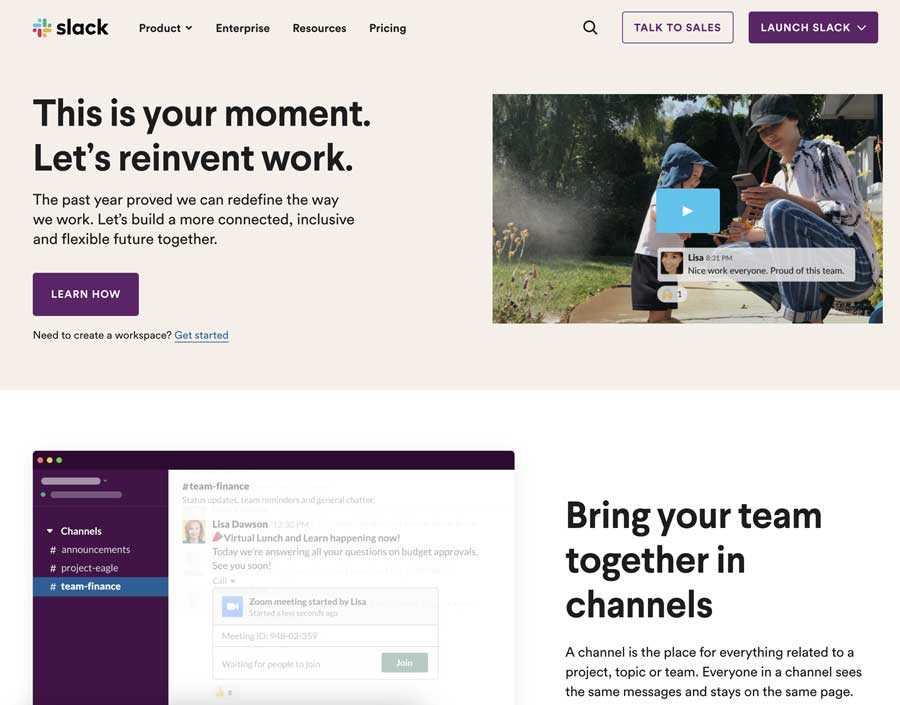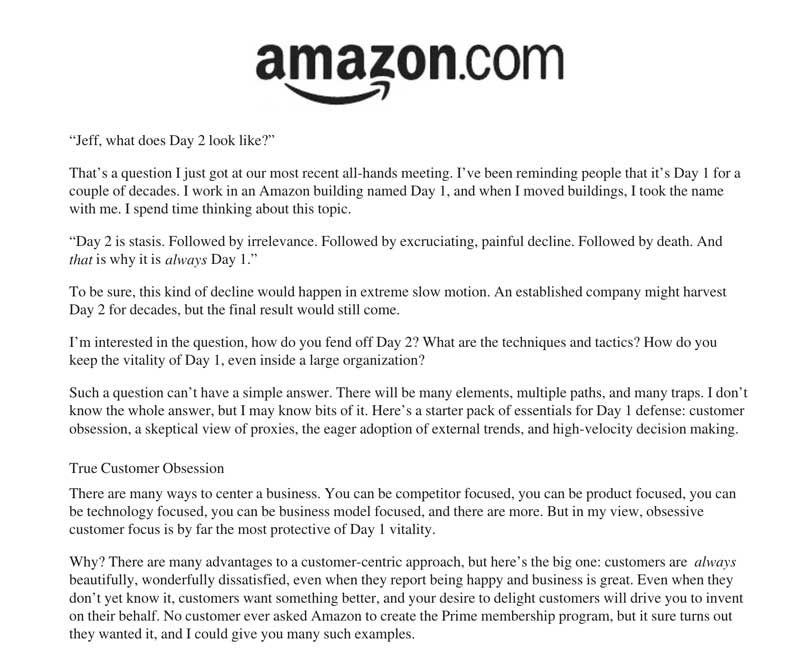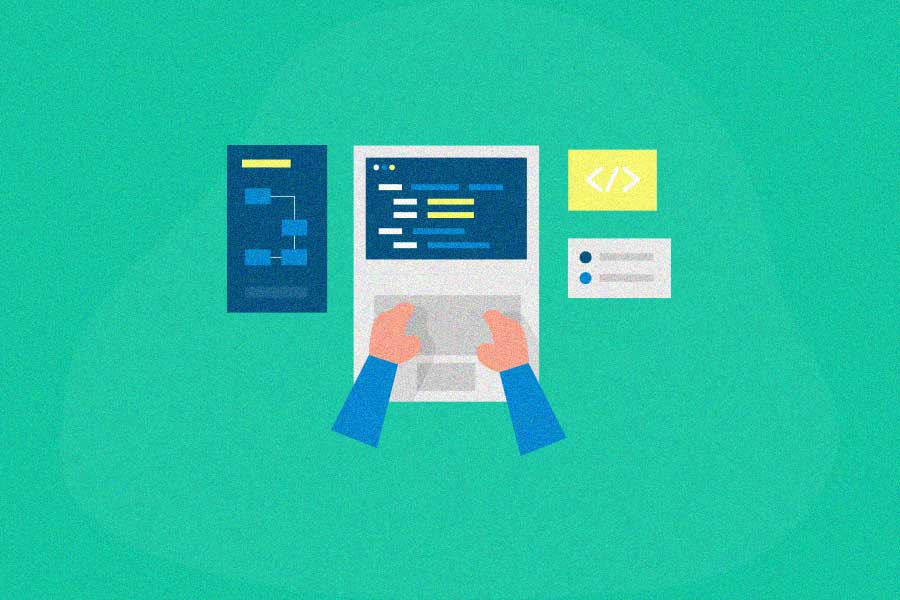Being customer-centric is more important than ever before. With so many review sites, social media, and publishing platforms, a business can’t hide from a bad customer experience.
In fact, your potential customers are probably reading through many of these sites when deciding whether to make a purchase.
Whether your reviews are good or bad, the end result is the same – the customer’s experience is now amplified and has a big impact on your business.
Add that to today’s highly competitive landscape, and a business has to really wow customers if it wants to stay on top.
But what does it mean to be customer-centric? How can you integrate a customer-centric mindset in your business?
Customer-centric definition: What it means to be customer-centric?
Customer-centricity is a strategy that prioritizes the customer’s experience at every stage of their buying journey – before, during, and after purchase.
When you run a customer-centric business, the customer is at the heart of every decision you make.
Your focus is on meeting their unique needs, building a better customer experience, and fostering long-term relationships. Essentially, your customers are the head of your company!
Customer-centric vs. product centric
Generally speaking, a company is either customer-centered or product-centered.
Imagine someone creates a product and decides to start a company. Their priority is to develop the best product, releasing new features and versions without any input from customers. The entire company is defined by its products. This is a product-centric company.
On the other hand, say a company focuses on creating solutions for customer needs and pain-points. It looks to customers for feedback and ways to improve, with the primary goal of enriching the customer experience. The company does more than just offer good service and support – it places customers at the center of all it does.
Customer-centric strategies are becoming more and more effective, thanks to the rise in competition. In a market where customers are spoiled for choice, a personalized experience and connection is a key differentiator.
Why is customer-centricity important?
Instead of wasting valuable time and resources trying to guess what customers want, why not just ask them?
Customer-centricity gives your business a clear guide for all its actions and decisions.
After all, customers are the lifeline of a business. They bring in sales and increase your bottom line. Plus, they’ve already gone through your entire customer journey and have first-hand experience with your product.
Unfortunately, most businesses don’t pay enough attention to their customers, beyond the standard sales funnel and support tickets. This is a huge missed opportunity. Customers can give a wealth of insights:
Your competitive advantages and strengths
- Why did customers decide to buy and stay with you?
- What were the main factors in their purchase decision?
- What other alternatives did they consider?
Market information (proven customer demographics)
- Where are they based?
- Do they live with family, friends, or alone?
- What school do they go to? What industry do they work in?
- How did they discover your product?
How customers are using your product
- How often do they use your product?
- How much time do they spend using your product?
- Was it difficult to start using?
- How satisfied are customers with your product? (This is known as an NPS survey.)
What your business is doing right
- What do they like best about you?
- What features do customers use most?
Where your business falls short
- Was it easy to make a purchase?
- Did customers find any feature difficult or hard to understand?
- What else would they like to see?
All these answers directly contribute to your overall business strategy, helping you increase customer satisfaction and opportunities for growth. Read more about how to create customer surveys and research customer satisfaction.
Benefits of having a customer-centric culture
Dedicating more time and attention to your customers will reap the rewards, and give you an edge over your competition. Here are a few stats that prove the benefits of customer-centricity:
- Companies that offer a great customer experience bring in 5.7 times more revenue than companies that don’t
- 84% of companies that actively improve customer experience see increases in revenue
- Customer-centric companies are 60% more profitable than ones that aren’t focused on customers
- U.S. consumers will pay up to 17% for a company with great customer service
90% of CEOs believe customers have the greatest impact on their business
As you can see, customers who are valued by a business are ones who are likely to stay loyal. That leads to a reduced customer churn, increased customer retention rates, and raised customer lifetime value (CLV).
And with more satisfied customers comes more positive reviews and referrals. If you’ve done all you can to give customers a stand-out experience, they’ll be glad to share their experience online or directly refer others to your business (you might just need to ask them the right way.)
Personal recommendations are one of the most trusted forms of marketing. Plus, the more people hear positive word of mouth, the better your brand awareness and reputation will be.
Challenges to expect when building a customer-centric business
While 84% of companies in the U.S. say customer experience is a top priority, only one in five companies demonstrated the capabilities to actually deliver a great customer experience.
The reality is that running a customer-centric business model takes dedication. Here are some common challenges you may come across:
Your business covers a wide market
Companies that target different regions, customer segments, or multiple product categories often have different teams managing each one.
Do you align everything under one customer-centric strategy, or divide your efforts? How do you make sure you’re delivering the same great customer experience?
If your business has a high-value flagship product, you can start by focusing your customer-centric strategy there first.
On the other hand, if there’s a vast difference between each customer segment (for example, you have customers in the U.S. and in Asia), it may be best to separate strategies. Then, keep teams aligned with regular meetings to share learnings and insights.
Your customer data is stuck in silos
Different teams use different tools. Sales teams might use HubSpot or Intercom, while customer support answers tickets on Salesforce or Freshdesk. All these tools have their own data and analytics reports – how do you get all of that together?
Customers move across your organization, and your customer-centric strategy should as well.
But this doesn’t mean a total reorganization. Create a cross-functional team to solve specific shared challenges (say, reducing customer churn) and create a central hub that brings relevant data and insights together.
A customer relationship management (CRM) system is a good way to organize all your customer touchpoints and information in one place.
It requires a big shift in business strategy
When you’re used to devoting so much time on your product and service, shifting your focus on customers is a bit unnatural. Especially if your business is already doing well.
It’s all too easy to revert back to “business as usual” because it feels faster and more familiar.
But if you don’t pay attention to your customers, they’ll soon leave you behind.
To jumpstart the transition, it helps to see value early on in a customer-centric approach. Read reviews, talk to your best customers, send out a customer survey. This gives you an idea of what you can learn from your customers themselves, and find ways to integrate it into your day-to-day business.
It’s a long-term commitment
Think of customer-centricity like any behavior or skill. It takes time to develop. While the first weeks may be a breeze (thanks to the initial excitement and momentum), it’s important to stick to your strategy.
In time, a customer-centric mindset will be ingrained in the way your business operations. But until then, here are some tips that can help:
- Create a plan: It’s one thing to say you’re focusing on customers, and another thing to determine what steps you’ll actually take to do it. Break down your strategy into actionable steps. For example, hold two customer-centric training sessions a quarter, or send 10 customer surveys a month.
- Track your progress: As you continue implementing your strategy, keep track. What new efforts have you made? What changes have you noticed? Not only does this help ensure you’re moving in the right direction (and give you a chance to course correct), it’s a nice reminder to see how far you’ve come.
- Share it with others: Working with others (or even having someone you share updates with) not only increases your level of commitment, but also keeps you focused and can bring new ideas to the table.
- Celebrate milestones: Have you created a new customer knowledge base? Did you just launch your first customer advocacy project? Celebrate these milestones with your team as you continue building your strategy.
How do you become customer-centric?
A customer-centric business starts at the core, with a customer-centric culture. Culture is best described as the values that “shape attitudes and behaviors in wide-ranging and durable ways.” It runs across multiple levels and “direct[s] the thoughts and actions of group members over the long term.”
Having a customer-centric culture means you value the existing customer’s needs and overall experience with your business. Your customers are what guide your entire business and team.
Let’s sit on that for a minute. How does that change your business? What practices are you doing that aren’t so customer-centric?
This may be easy for some teams, like sales or customer support, where prioritizing customers is only natural. But it’s important to apply customer-centricity in all other areas too. For example, you can align any new products or services to your customer’s needs. Or tailor your next webinar to your customer’s most frequently asked questions.
Granted, you’re still running a business and you’ll come across some difficult customers. But you can still treat these customers with respect and offer the best possible solution, without feeling like you gave in to their every need.
But if you lash out or act badly, you have a lot more to lose than the customer. They may give you a bad review or share an unfavorable post, which can easily spread and tarnish your business’s reputation.
But a customer-centric culture has to come from its leaders. They should establish a strong set of core values, train all team members, and then provide every resource to best enable customer success. Most of all, leaders should set a precedent throughout the organization. Start with a top-down approach.
How to measure customer-centricity
How do you know your customer-centric strategy is actually working? There are two ways to measure how your business is meeting customers expectations: customer performance indicators (CPIs) and key performance indicators (KPIs).
Customer performance indicators
Customer performance indicators is a relatively recent concept, measuring how a strategy is performing for your customers. Rather than sending out a feedback survey (which can be vague and more beneficial for the company), CPIs measure the results your customers care about.
Whether you’re a B2C or B2B, your customers have certain expectations: a quick checkout, an easy signup process, durable products, fast customer support, and more.
And while customers may have similar concerns, you still have to research what CPIs are specific to your company. For example, a customer at a supermarket is likely to look for convenience and affordability. A hotel guest might value efficiency and customer service.
The best CPIs look at the customer context – where they are when they start interacting with your company, and what they want throughout the purchase process. Here are some starting points:
1. Time
- How much time does your solution save customers?
- Are you enabling them to find your product and check out in the shortest time possible?
- How long do they have to wait for service or support?
2. Convenience
- Is your product readily available to customers?
- Do you offer service when it’s most convenient to them?
- Do you accommodate multiple payment options?
3. Product value
- Are your products well-made and reliable?
- Do customers often complain about breakage?
- Does your price match the quality of your product?
4. Service
- In what ways can a customer get support?
- Does someone actively reach out to check in?
There are many other possible CPIs. Get to know customers and discover the results that matter most – and then start measuring them.
Key performance indicators
Behind every customer-centric strategy is still a business. Key performance indicators measure how your strategy is performing from a business point of view.
While standard business KPIs cover sales profits and revenue, customer-centric KPIs look at how customer efforts affect the business. We go over a few popular metrics to track:
Customer retention rate: CRR represents the number of customers your business has kept within a given period. It’s the percentage of your total customers (at a given time) who are loyal customers and likely made repeat purchases. It’s the inverse of customer churn.
Customer churn: Customer churn is the percentage of total customers (at a given time) who have stopped buying or subscribing from your company. It’s the inverse of customer retention.
Customer lifetime value: A CLV estimates how much revenue a single customer will generate throughout their entire relationship with your business. It’s a good way to account for purchase frequency, purchase value, and average lifespan.
Word of mouth: Word of mouth is a great gauge of how happy your customers are. Not what they tell you, but what they tell others. This can be seen in the form of positive reviews, online brand mentions, organic word of mouth, or sharing through a referral program.
Customer feedback surveys: There are three top surveys used to assess different aspects of customer experience.
- A customer satisfaction score (CSAT) is what you typically see, with multiple questions about satisfaction levels based on a five-star rating.
- A customer effort score (CES) is generally a single question (asked post purchase) that measures how much effort a customer had to put into making their purchase.
- A net promoter score (NPS) focuses on one metric – the likelihood a customer will recommend your brand to others. We go over this in more detail in our article on NPS questions.
Best practices when building your customer-centric strategy
While the right customer-centric strategy differs for every business, there are few best practices that can help any business:
1. Get to know your customers (and keep in touch)
The only way to know your customers is to communicate with them. Not just in expected transactions, but through proactive methods. Send a survey to your most valuable customers or schedule a check-in call with customers who recently made a purchase. If someone writes a review or posts about your product on social media (whether good to bad), reply to their comment.
Make it a point to regularly reach out to customers and meet them on their most-frequented platforms. These efforts are the best way to learn more about how you can improve the overall customer experience.
2. Look at things through your customer’s point of view
Before making any decision, consider all aspects through the eyes of your customers. How would the change affect them? Does it make the customer experience better?
If you’re unsure, you can just ask them. Send out a short survey to your best customers asking what they would like to see more in your business, including your proposed idea as one of the options.
You can also do an A/B test (although this works best for digital products). A/B testing is a common practice that often leads to surprising results. Even the best companies won’t always know what works with their customers, so it’s important to keep them in the loop.
When you consider your customers first, you’ll have an easier time giving them exactly what they want and knowing how to improve your conversion rates.
3. Personalize your customer experience
Here’s a tried and tested way to get a customer’s attention: Use their name, recommend products they’d actually like, offer promotions for what they have in cart.
Personalization helps set you apart from all the other customer messaging, and when done well, is hard for your competition to copy.
Studies show 80% of people are more likely to purchase when they receive a personalized experience. However, make sure not to go overboard. Being everywhere and too chummy with your customers can also come off as creepy. Some customers may prefer a more relaxed touch.
As always, it’s best to take a cue from the customers themselves and tailor your strategy for their needs.
4. Make every employee part of the customer experience
Some companies go as far as requiring every employee to interact with customers. For example, Twilio engineers speak to at least one customer every quarter, while Disney is known for its “cross-utilization” shifts, where leaders can opt to serve guests in the front-line.
These first-hand interactions give everyone a better understanding of customers, insights they can bring back to the company, and new ideas to improve the customer experience.
Even if you don’t take this route, it’s important to get your entire team on board a customer-centric strategy. Schedule regular meetings and updates, have documentation anyone can easily access, and find ways everyone can help support this approach.
5. Continue evolving your customer-centric strategy
As with all good strategies, customer-centricity isn’t something you can set and forget. As your business changes, so will your customers. Keep your customer-centric strategy an ongoing process that’s open to change. Reevaluate the customer experience at every stage of their buyer journey. You may find that some methods work better than others, or your customers prefer a self-serve option over a long sales cycle.
Continue listening to your customers and keep an eye out for any shifts in their needs and preferences. These insights, along with industry trend reports and news, can help you stay ahead of the competition.
Customer-centric business examples to inspire you
Now that you know what you need to build a customer-centric organization, let’s look at some of the most successful examples today:
Trader Joe’s: Going above the expected grocery experience
Trader Joe’s consistently scores at the top of customer satisfaction surveys when it comes to food retail. But their customer-centric strategy is not one you would expect. The company’s site doesn’t have any direct company line or live chat support. It doesn’t give any coupons or rewards cards. It doesn’t have a self-checkout option.
However, Trader Joe’s does know how to give its customers what they want. The grocery shopping experience at this chain is fun and welcoming. Even on its most jam-packed day, employees are always happy and willing to help customers.
And what do grocery shoppers want most? Variety of products, which Trader Joe’s offers in volume. From Everything but the Bagel Sesame seasoning to watermelon fruit spread to basic grilled vegetables (in a pack), the retailer knows how to create a customer experience.
Here are other ways Trader Joe’s shows its customer-centricity:
- Customers can request a free taste test of any item in store
- When customers complained about too much plastic packaging, the company made real efforts to switch over to more eco-friendly options
- The company takes customer concerns to heart: Its Phoenix branch now opens one hour earlier to accommodate the area’s early shoppers, and a soy ice-cream cookie product was stocked in the Reno, Nevada branch after it was requested by a customer.
Zappos: A prime example of a customer-centric brand
Zappos has spent years developing a customer-centric culture. It may be an online shoe marketplace, but the brand is positioned as a “service company that happens to sell shoes.” Its primary goal is to serve its customers.
For example, Zappos encourages its team to do all they can to solve a customer issue – no matter how long it takes (so far, the record is 10 hours and 43 minutes!). The company is also known for surprising its customers with free shipping upgrades or unexpected gifts.
In everything it does, Zappos knows the importance of satisfying and building relationships with customers, and trusts these customers will be their best advocates and promoters for the brand.
Here are other ways Zappo’s shows its customer-centric strategy:
- A 365-day return policy (impressive considering their product is shoes)
- No extended phone trees – every customer can speak to a real human in under a minute
- Its customer loyalty team sends out almost 13,000 personally-written greeting cards to their customers
Slack: How a business platform takes care of its customers
Slack is one of the most well-known business communication platforms, and a great example of how a freemium model should work. Users are free to download and use the platform, which gives the company a large customer base of over 12 million daily users to draw insights from.
A big key to Slack’s growth was that its focus wasn’t to get people to buy, but to be successful and share the brand with others. The company’s former Chief Marketing Office (and first marketing employee), Bill Macaitis, is a huge believer in a customer-centric approach.
Here are ways Slack has used this to become one of the best team messaging apps:
- The company prioritizes its own customer metrics. For example, founder Stewart Butterfield found out early on that any team that exchanged 2,000 messages was truly integrated with Slack and more likely to continue using it.
- Customer feedback has been a priority since the beginning, even during its private beta launch, where team managers (not CEOs) were invited to use the product.
- All Slack messaging resonates with the voice of the customer: “This is your moment. Let’s reinvent work,” “Enterprise-grade for everyone,” and “Customize Slack to work for you.”
Amazon: Bringing products closer to the customer
Who hasn’t experienced how easy it is to buy something from Amazon? This process was built by founder Jeff Bezos, who in a letter to his shareholders wrote: “There are many advantages to a customer-centric approach, but here’s the big one: customers are always beautifully, wonderfully dissatisfied, even when they report being happy and business is great.
“Even when they don’t yet know it, customers want something better, and your desire to delight customers will drive you to invent on their behalf.”
Here’s proof that Amazon puts customers are the core of their business:
- Amazon has set up fulfillment centers all over the country to make sure customers can get their purchases sooner than ever
- Customers can easily get on live chat to cancel or return any purchase, and sometimes (if the order is fulfilled by Amazon) be refunded without sending back the item.
- Managers attend two days of call center training a year (it’s been said even Bezos himself does this).
Key takeaways
Yes, exceptional customer service is a key component of being customer-centric. But true customer-centricity involves much more than that. Being customer-centric means placing customers at the forefront of every decision and action you make.
It may take time to shift your business toward a customer-centric strategy, but the rewards are well worth it. Your customers will be most satisfied, likely to stay loyal, and happy to tell others about your business
.








